Stunned by the cold in Cape Cod, 10 loggerhead turtles recover at Springfield aquarium
Correction: The article has been updated to reflect a change in title for Mike Daniel, who is now the Director of Animal Care. The aquarium is also not required to have permits to rehabilitate sea turtles.
From the pilot who flies injured reptiles inland to the aquarium staff and volunteers standing by to begin rehabilitation efforts, it's no small feat to rescue turtles endangered by unseasonable cold along the Atlantic seaboard.
On Monday, ten sea turtles left stunned and disoriented by the chill were flown to Springfield to recover at Wonders of Wildlife National Museum and Aquarium.
The east coast has been hit with the third largest stranding event on record, said Mike Daniel, the Wonders of Wildlife Director of Animal Care. With the intense drop in temperatures, nearly 1,000 sea turtles washed ashore at the end of December.
In normal circumstances, migrating sea turtles will forage in coastal habitats along northeastern shores before heading south to warmer waters. Once the temperature drops below 50 degrees, hypothermia leaves sea turtles with what’s called “cold stunning,” causing the creatures to beach. Disoriented turtles wash up on shore and are too sluggish and vulnerable to continue swimming towards warmer waters or survive on their own.
The ten turtles recovering in Springfield were flown in on Midwest Premier by pilot Ken Andrews, who is also the vice president of Turtles Fly Too. All are loggerhead turtles, with at least two weighing in at almost 80 pounds each.
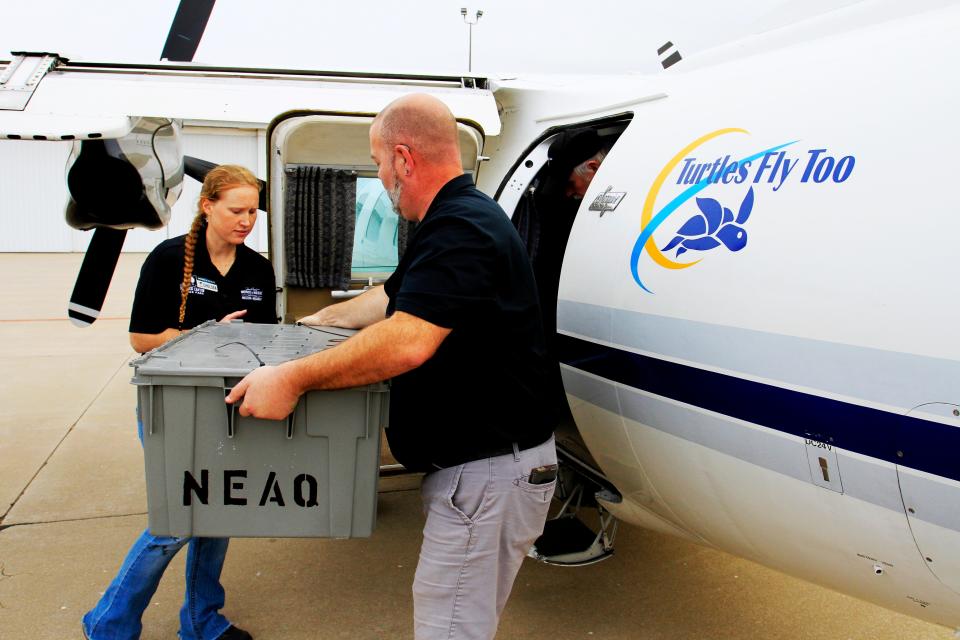
Once secured in the back of company vehicles, drivers transported the turtles to the aquarium's Sea Turtle Center. A team of more than a dozen people jumped into action, inspecting the loggerhead turtles before weighing each of them. Once that initial check in was over, each of the loggerheads were carried into a 16,000 gallon recovery pool.
Planning happens all year in preparation of the cold-stunning season
Wonders of Wildlife National Museum and Aquarium joined nationwide efforts to provide care for cold-stunned sea turtles three years ago. They work in partnership with the National Oceanic Atmospheric Administration and the U.S. Fish and Wildlife Service as the Midwest’s only sea turtle rescue, rehabilitation and release center. Through the Bass Pro Shops and Cabela’s Outdoor Fund, Wonders of Wildlife was able to secure funding for the venture.
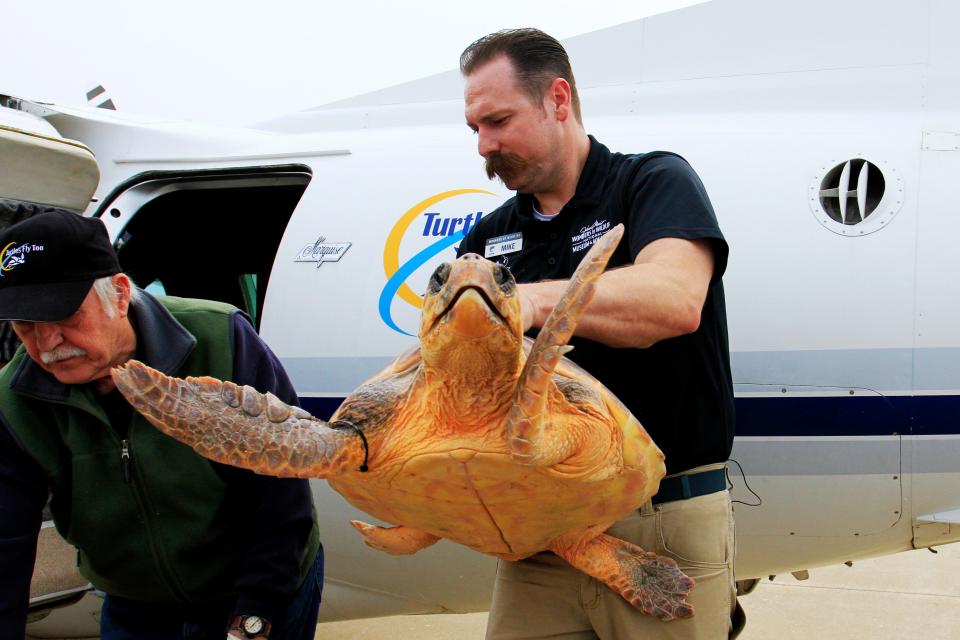
Daniel said the team at Wonders of Wildlife prepares for the cold-stunning season all year, but really started focusing in October.
More:Rescued sea turtles get TLC at Bass Pro's Wonders of Wildlife
"We hope that every year we're not contacted because that means there just weren't as many turtles stranded, there were enough facilities available to help the ones that needed it and we weren't needed for that additional support," Daniel told the News-Leader just before the loggerhead turtles arrived. "But for the last three years, we have been needed."
Wonders of Wildlife jumpstarted its sea turtle care with Izzy and Miss Pam, two green sea turtles that were not able to be released and now live at the aquarium.
"Our veterinary team already had the expertise to identify challenges (and) to stay ahead of problems so there's not a problem, and our team was accustomed to working with them and feeding them and training them," Daniel said.
The first year of helping with cold-stunned turtles, there was a bit of scrambling. Daniel said the team was trying find out what tools were available, how many turtles might come, what sizes, when would they arrive and more. In the third season of helping, much of that preparation work has become muscle memory.
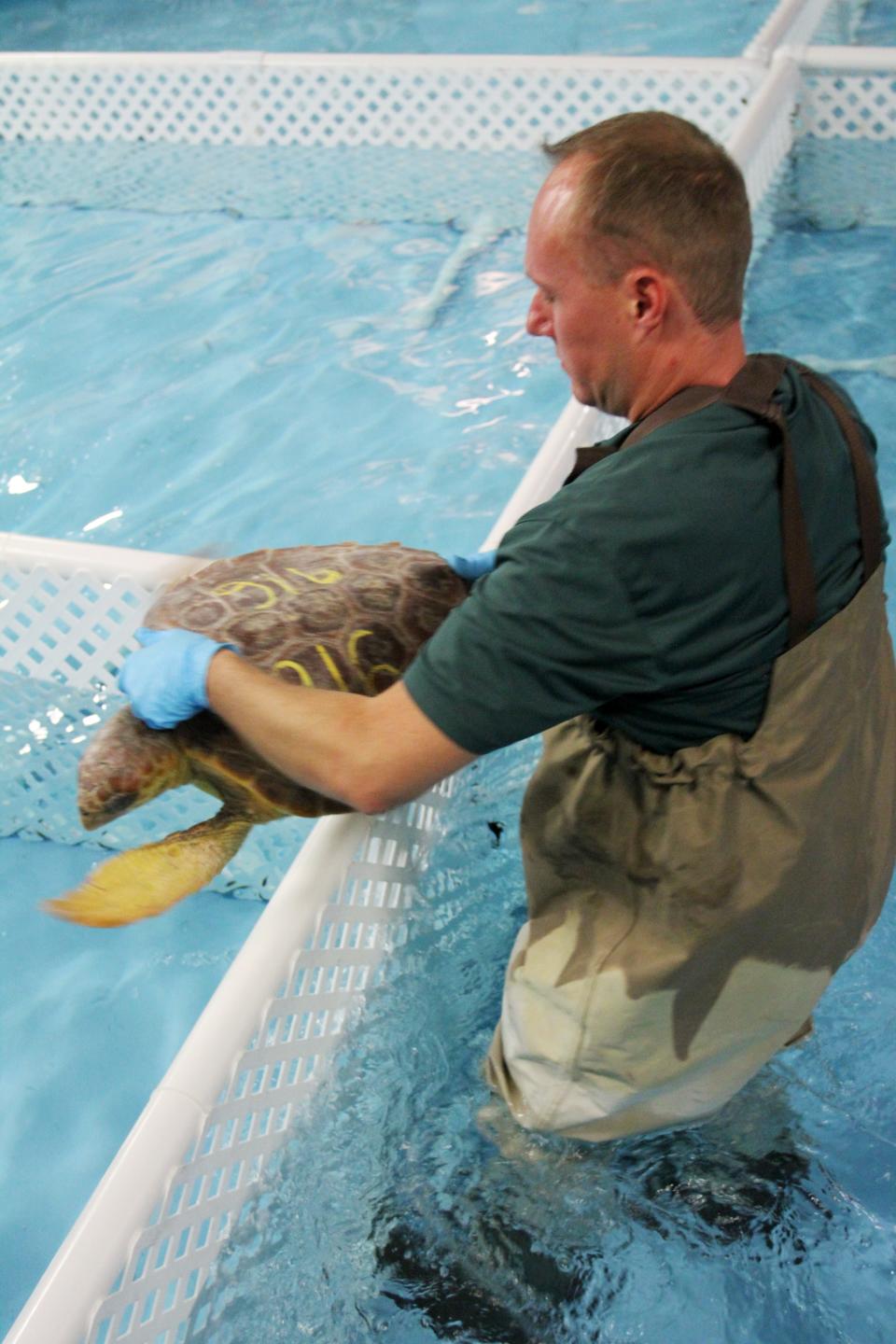
A checklist was ticked off before the turtles arrived, ensuring enough salt was on site, pumps were inspected, filters checked and more.
"Having done it a couple times, it makes us that much more efficient in being ready," Daniel said.
A disheartening reality is that any sea turtles that wash ashore in January and February are usually too far gone and either die on their own or are humanely euthanized, Daniel said.
One takeaway Daniel hopes people get is the "global impact" sea turtles have.
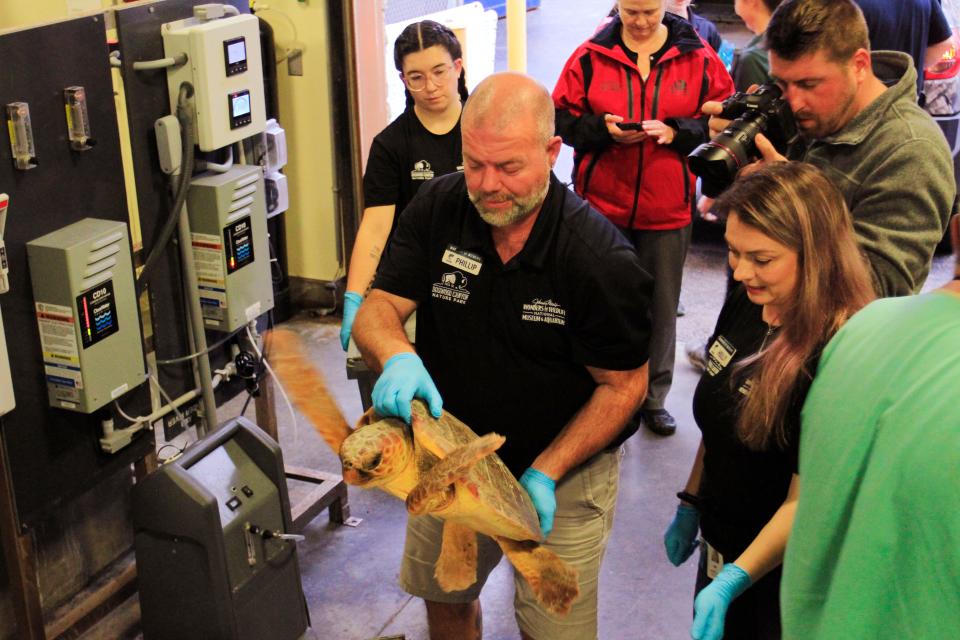
"Turtles are a keystone member of their ecosystem," he said. "They're the gardeners of the sea grass beds, making sure that they're healthy. They're going through and eating sea grasses. They're eating prey in that grass, and that makes sure that those grass beds aren't being choked by overgrowth."
It's not just sea grass beds sea turtles help.
"They're the keepers of the reefs," Daniel added. "You have hawksbill (sea turtles) that are eating these aggressive sponges that can crust and overgrow corals. They eat those sponges and that leads to more corals flourishing."
A few other loggerhead turtle facts
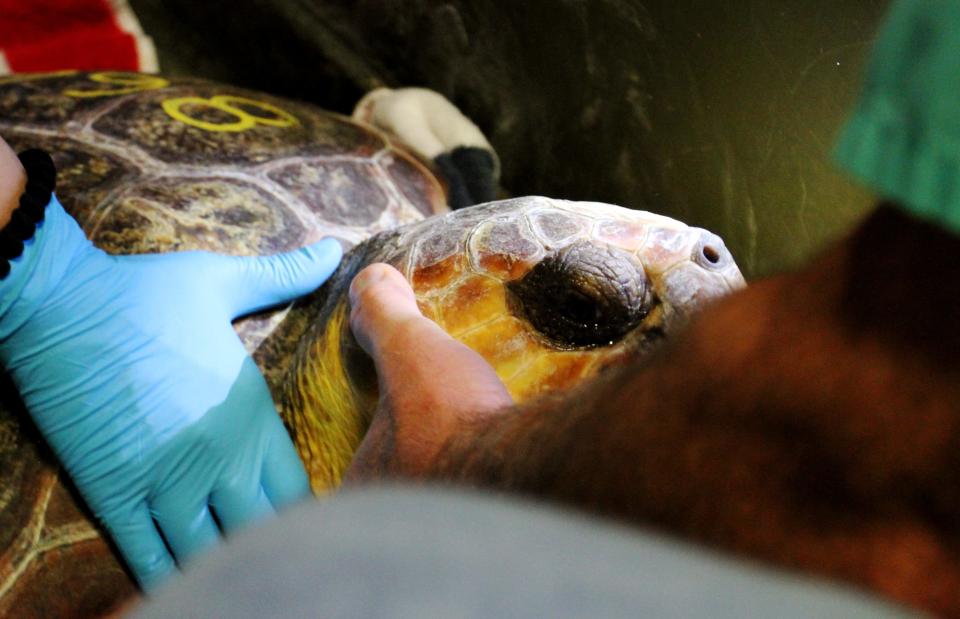
Oceana, an international organization focused solely on oceans, shared several loggerhead turtle facts on its website, including that they are slow-growing but long-lived animals that don't reach sexual maturity until about 35 years old.
Loggerhead turtles are found throughout temperate and tropical regions of the Atlantic, Pacific and Indian Oceans, and are the most abundant species of marine turtle found in United States coastal waters;
Loggerhead turtles are named for their broad, muscular heads;
Loggerhead turtles can be three feet long and weigh up to 250 pounds;
Loggerhead turtles have blunt jaws that allow them to feed on hard-shelled prey, such as mollusks, whelks and conch.
Sara Karnes is an Outdoors Reporter with the Springfield News-Leader. Follow along with her adventures on Twitter and Instagram @Sara_Karnes. Got a story to tell? Email her at skarnes@springfi.gannett.com.
This article originally appeared on Springfield News-Leader: Cold-stunned in Cape Cod, 10 loggerhead turtles recover at aquarium

